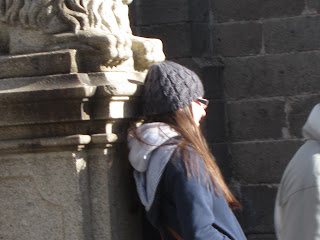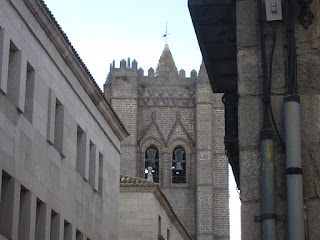We have been asked several times when are we going to start our "real work?" Another popular question is "what else are you doing other than learning Spanish?" Can't you just use a translator?
I wish we could just use a translator - that would be a lot easier than trying to master a new language. But the simple answer is no, we cannot. We are doing our real work right now and it is a full time job with lots of overtime. To reach those around us we must learn Spanish. It is slow and it is discouraging and it requires a lot of tylenol. We see lots of need and work that needs to be done, and yet we have our noses in books and flash cards. We ask ourselves (and I am sure some of you ask the same question) isn't there something more productive we could be doing?
I am reading
Like a Flickering Flame: A History of Protestant Missions In Spain. It is a slow read, even in English. I skipped to the back however and read some of the appendices and I now know there is no shortcut or way around learning language. Appendix I is a "Manifesto to the Foreign Missionaries and Missions in Spain." It is a letter that was sent to missionary societies working in Spain many years ago, yet it still rings true.
In a section entitled
Some Facts That Need to Be Pointed Out it says:
A brief trip around Spain, by people without a knowledge of the language and the characteristics of the field, is totally insufficient as a preparation for beginning a new work. Spain is a difficult and complicated place to work for many reasons and a minimum requisite is a serious study through ample consultations.......No one should be sent to the mission field without first knowing that they have the capacity to learn a language, as, without a profound knowledge of the normal means of expression, nothing effective can be done. Spain is a country with a long history and ancient culture that comes directly from the Latin and messages where missionaries "murder" the Spanish are not normally acceptable. Nevertheless, there are cases where missionaries that have not reached a sufficient level of dominating the language after two or three years of study, continue here as "missionaries." Does it surprise us that the national believers ask the reason for this?
Before we were placed in Spain we took a language acquisition test. It says we can learn the language (my brain begs to differ at times) and we are working full time at the task. We are studying the culture and the history of the country. We are doing our "real work." Without this, our work will be futile.

















































